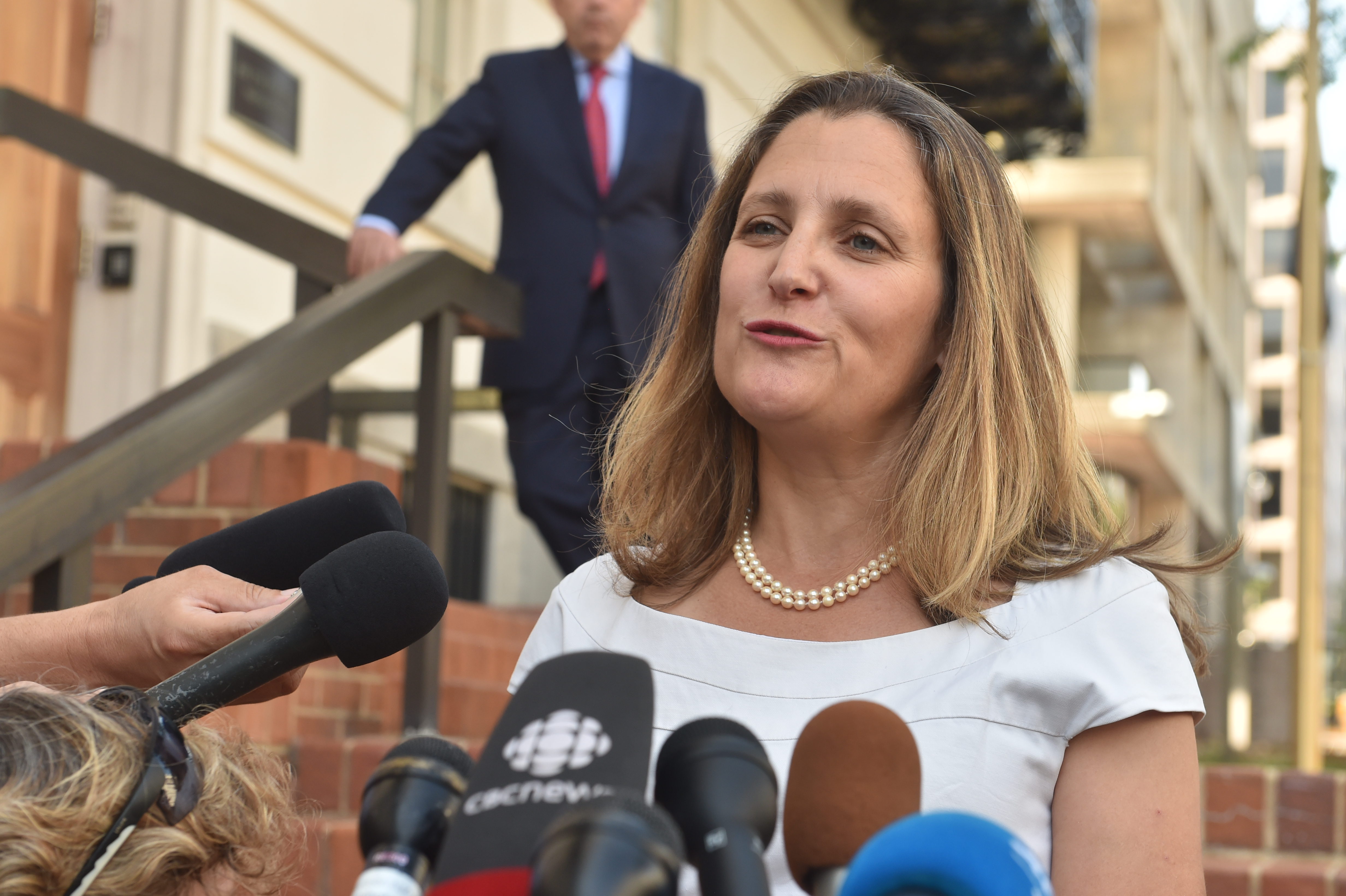US, Canada NAFTA talks enter crucial phase
Canadian Foreign Minister Chrystia Freeland was upbeat about the potential for progress after Mexico agreed to a new trade deal with the United States (Nicholas Kamm)
Washington (AFP) – US and Canadian trade officials will begin a crucial phase of talks on Wednesday to see if they can bridge their differences to sign a revamped North American Free Trade Agreement.
After Mexico paved the way by agreeing to NAFTA 2.0 with the United States, Canada’s Foreign Minister Chrystia Freeland was upbeat about the potential for progress.
But Canadian Prime Minister Justin Trudeau has made it clear he would only sign a new trade pact he considers good for his country.
The sticking points between Ottawa and Washington likely will center on Canada’s managed dairy market and how to handle some disputes among NAFTA partners.
After months of intense talks, the United States and Mexico announced an agreement Monday to thoroughly overhaul the 25-year-old free trade pact.
But President Donald Trump suggested he could leave Canada out and press ahead with a two-party deal with Mexico.
However, Trudeau as well as Mexico’s President Enrique Pena Nieto and President-elect Andres Manuel Lopez Obrador said NAFTA should remain a trilateral deal.
Following her first brief meeting with US Trade Representative Robert Lighthizer on Tuesday evening, Freeland said Mexico’s willingness to make “tough decisions” on labor rights and auto requirements helped pave the way for a new regional agreement.
– ‘Productive’ discussions –
Negotiators have worked for a year to update and rewrite NAFTA.
But in the last five weeks, Washington and Mexico City held talks to resolve their bilateral issues, especially on the auto industry rules, without Ottawa.
While critics said Canada had been frozen out, Freeland said she has been in close touch with her US and Mexican counterparts throughout the summer, and had already achieved “a high level agreement with the US” on labor issues.
Mexico’s efforts to reach an accord with Washington “definitely clears the way for us to have some significant, substantive, and, I think, productive conversations with the US this week,” Freeland told reporters.
Canada will stand firm “while looking for areas where we can find a compromise.”
She said she would meet with her Mexican counterparts, who had remained in Washington after announcing the breakthrough with the US.
The outlines of the new NAFTA include a higher percentage of locally-produced components in autos, tougher worker protections and a provision to review the 16-year deal every six years.
But Trump said he would take a tough line with Canada on dairy trade — long a source of tension between the neighboring countries.
However, Trudeau vowed not to give in to Washington’s demands to alter the system under which Ottawa sets dairy production quotas and prices, with steep tariffs on imports.
“My position on defending supply management has not changed. We will defend supply management,” Trudeau said.
The system has been in place since the 1970s and has survived several attempts to undo it.
Trudeau faces political pressure with elections due in a year, which could make him wary of being seen as capitulating to Trump, especially on dairy.
– Time pressure –
Canada also objects to the US call to eliminate bi-national panels to resolve trade disputes among NAFTA partners under Chapter 19, which appears to have been dropped in the deal with Mexico. Canada has used the provision to challenge US anti-dumping and countervailing duties.
But Washington backed away from a strenuously-opposed provision to require the three nations to renegotiate the trade pact after five years. Instead, the agreement with Mexico extends NAFTA for 16 years but with a review every six years.
The White House is pushing to finalize things quickly so that Pena Nieto can sign the treaty before handing the reins over to Lopez Obrador on December 1.
Pena Nieto said the deal with the US means the sides are now “in the final stretch of a trilateral deal.”
Lighthizer said the Trump administration would notify Congress by Friday of the new agreement, which would allow the required 90 days’ notice to get the pact signed by December 1.
Disclaimer: This story has not been edited by Siliconeer and is published from a syndicated feed. Siliconeer does not assume any liability for the above story. Validity of the above story is for 7 Days from original date of publishing. Content copyright AFP.


